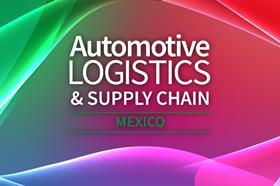Red Sofa Interview: VW Chattanooga is sharing EV logistics learnings with the VW Group
Watch Paulo Monteiro, head of Logistics, VW Group of America Chattanooga Operations discuss how the Chattanooga plant is leading the way in terms of EV logistics, and why it is sharing its findings with the wider Volkswagen Group and its resurrected Scout brand.

Related video
-

Red Sofa Interview: Navistar to use VW Group and Traton cross-docking in North America and Mexico
-

Red Sofa Interview: VW Truck & Bus Mexico’s plans to increase localisation
-

Red Sofa Interview: How Volkswagen is readying for electrification in México
-

Red Sofa Interview: VW logistics using rail and digital twins to boost sustainable operations in US and Mexico
-

Red Sofa | Manoj Tiwary at Subaru Canada on scaling digital solutions
Paulo Monteiro, head of Logistics, VW Group of America Chattanooga Operations speaks to Christopher Ludwig, editor-in-chief, Automotive Logistics at ALSC Mexico about the benefits of sharing knowledge across the carmaker’s divisions.
Monteiro says that the Chattanooga, Tennessee plant is in regular contact with the wider group, as mentioned on the Red Sofa by Peter Koltai, senior director of Logistics, Volkswagen de México. He explains that leading the way in terms of EV logistics was a learning curve, particularly because legislation for EV shipping and exports were not established in the US at the time.
”That is the kind of information that we are now sharing, not only with our colleagues in Puebla [Volkswagen de México] but also with our colleagues in Scout.”
The Scout plant in South Carolina will make the resurrected Scout off-road brand on an electric platform and will operate it as an independent unit. The plant is set to be up and running from 2026 with annual production capacity set around 200,000.
Monteiro adds that having similar processes and shared supply chains across the VW Group adds an additional layer of resilience. “As a group, we share the same platform,” he says. “That’s a strategy from VW that means we have the same kind of part numbers and parts on each car. [Recently] we had an interruption with one of our suppliers that went bankrupt out of nowhere, and we were able to bring parts immediately out of Europe and continue production. That’s one of the advantages of sharing the same kind of supply chain.”






